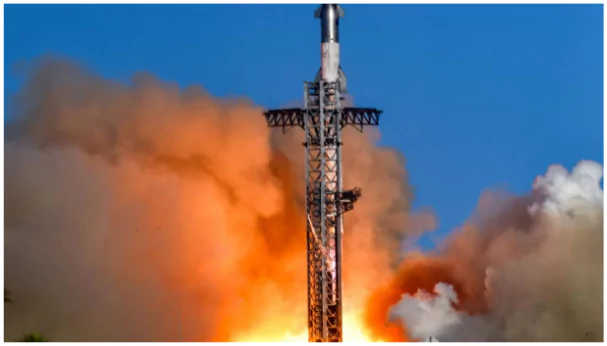CEO of SpaceX, has announced that an uncrewed Mars landing mission is planned for late 2026.
- The mission will carry Optimus, a robot developed by Tesla. If successful, human landings could begin as early as 2029 or 2031.
What is the SpaceX Mars Mission?
- The SpaceX Mars mission is led by Elon Musk.
- The mission revolves around Starship, a powerful and reusable spacecraft designed to transport people and cargo beyond Earth.
- Main Goals of the Mission
- Human Settlement on Mars
- SpaceX wants to send people to Mars to build a permanent colony.
- Elon Musk envisions a city with a population of one million in the long run.
 Sending Cargo Before Humans
Sending Cargo Before Humans
- Before astronauts arrive, uncrewed Starships will carry supplies, habitats, and infrastructure.
- This will help prepare Mars for human arrival and survival.
- Making Space Travel Affordable
- Starship is designed to be fully reusable, reducing the cost of Mars missions.
- This could make deep-space travel more accessible.
- Possibility of Terraforming
- Musk has mentioned terraforming Mars, or changing its environment to make it more like Earth.
- However, this remains highly theoretical and far in the future.
- Key Technologies for the Mission
- Starship Spacecraft
- A stainless-steel rocket with powerful Raptor engines.
- Can carry over 100 passengers and large cargo loads.
- Fuel Production on Mars (ISRU)
- SpaceX plans to make fuel on Mars using carbon dioxide from the air and water ice.
- This could help refuel Starship for the return journey.
- Super Heavy Booster
- The first-stage rocket that lifts Starship into orbit.
- It is reusable, helping lower costs.
Challenges in Reaching Mars
While SpaceX is ambitious, several technical and logistical hurdles could delay the mission.
- Need for In-Orbit Refueling
- Starship needs to carry 4,200 tonnes of propellant, but this is not enough for a Mars trip.
- SpaceX plans to refuel Starship in Low Earth Orbit (LEO) using tanker spacecraft.
This technology has never been tested or demonstrated before.
- Strict Launch Window
- Earth and Mars align every 26 months, creating an ideal launch window.
- Missing this window means a delay of over two years.
- The next window is in 20 months, giving SpaceX limited time to prepare.
- Manufacturing & Launching Tankers
- SpaceX must design, build, test, and launch multiple tankers in a short time.
- In-orbit refueling is extremely complex, involving super-cooled liquid oxygen and methane.
- A single failure in refueling could jeopardize the entire mission.
- Current Issues with Starship
-
- Current Starship design lacks landing gear, unlike Falcon 9, which lands using retractable legs.
- Starship has only landed on Earth using a “Chopsticks” catching system, which does not exist on Mars.
- Given the high failure rate of Starship’s test flights, further refinements are necessary before a Mars landing.
![]() 31 Mar 2025
31 Mar 2025

 Sending Cargo Before Humans
Sending Cargo Before Humans
